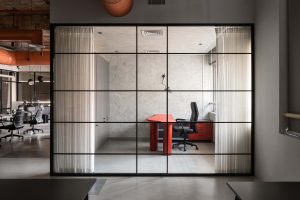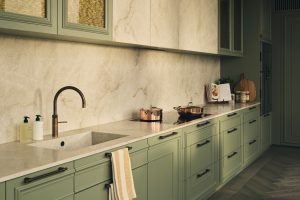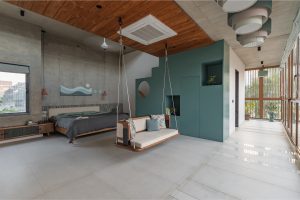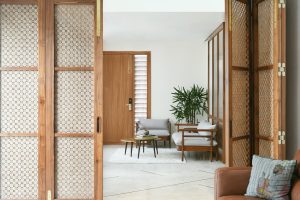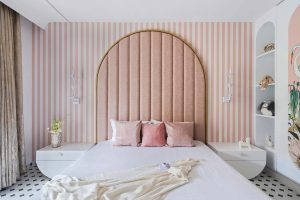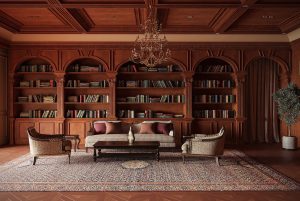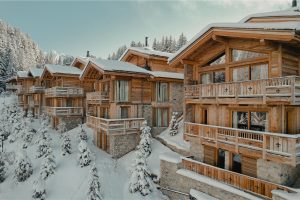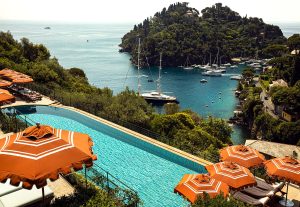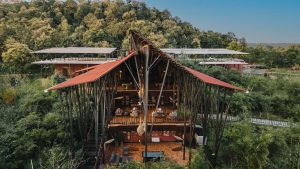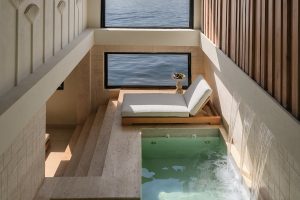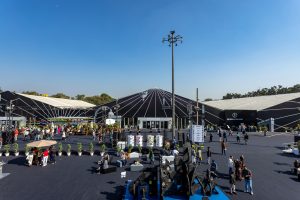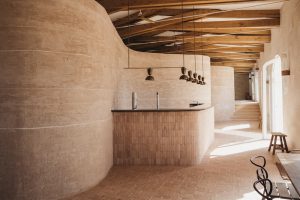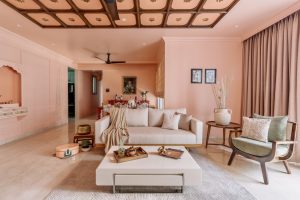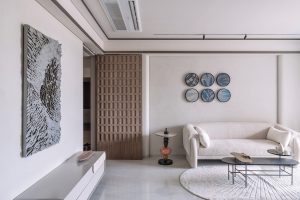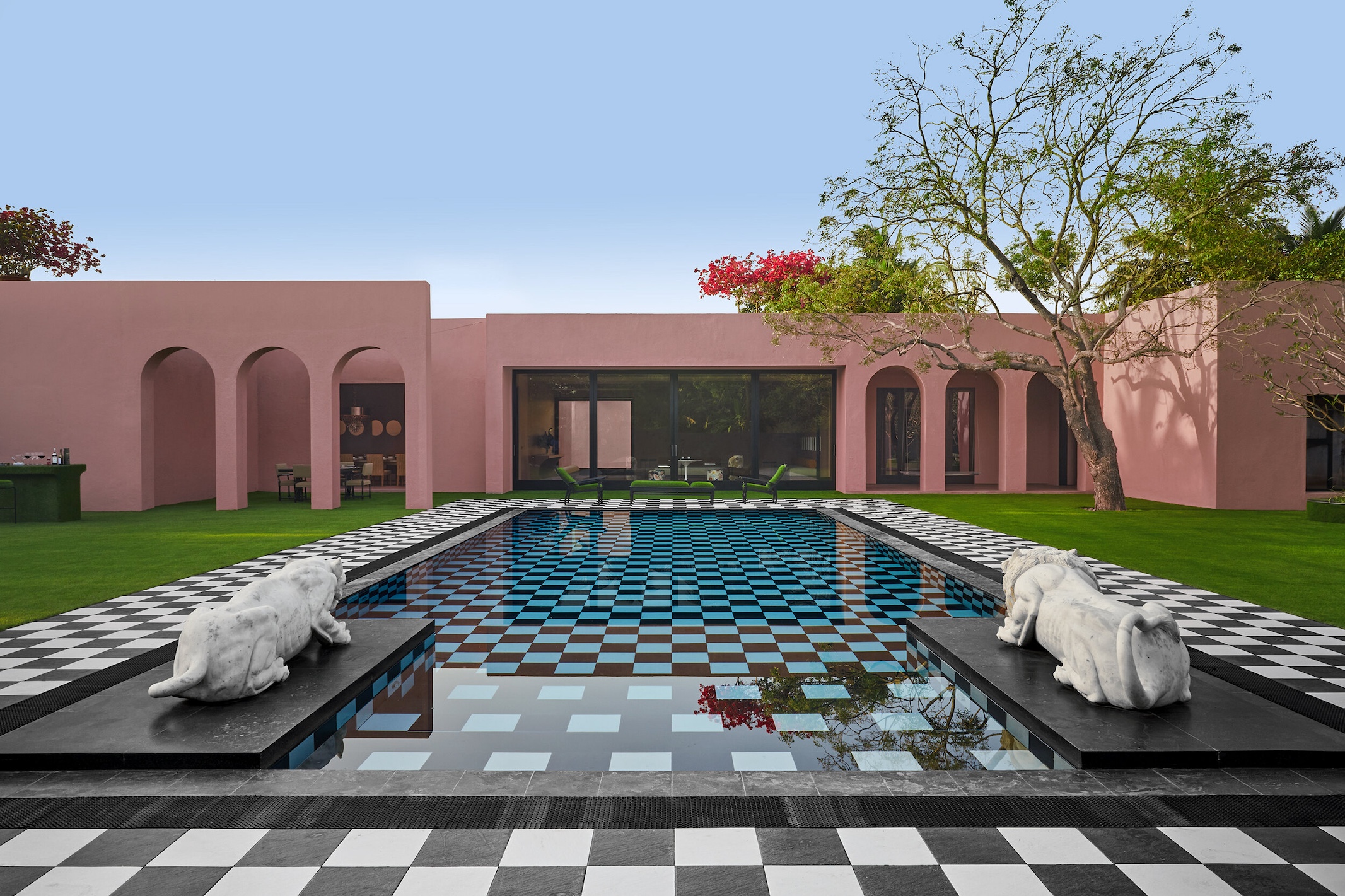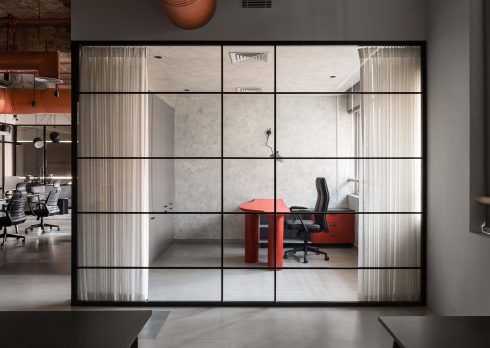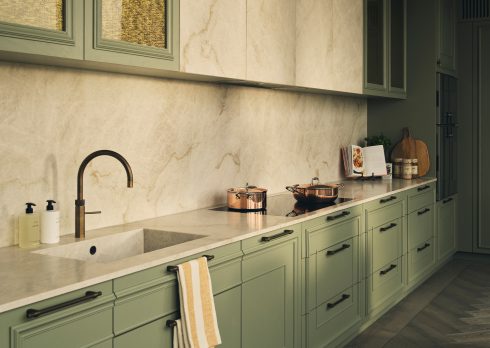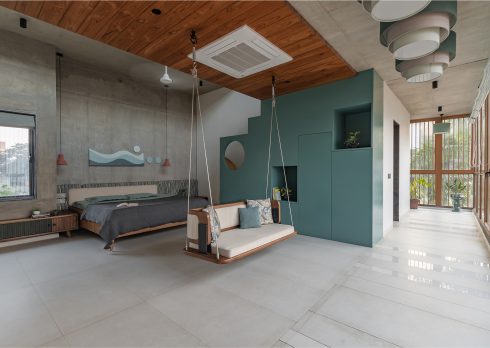3 Holiday Homes In Alibaug That Intertwine Tradition, Luxury, And Sustainability
From recycled building materials to the allure of Tropical Modernism, three Alibaug weekend homes reinforce the trend of mindful living.
Sustainable design practices that focus on energy efficiency and vernacular techniques of thermoregulation shine a spotlight on how minimising the ecological footprint can forge a more reliable future for architecture. In what seems like a nascent trend across second homes blossoming upon the shores of Alibaug, DP examines how contemporary designers go green. With a subtle nod to biophilia, and nature trickling into the blueprint to redefine inner-outdoor boundaries, these 3 holiday homes in Alibaug are sure to mesmerise.
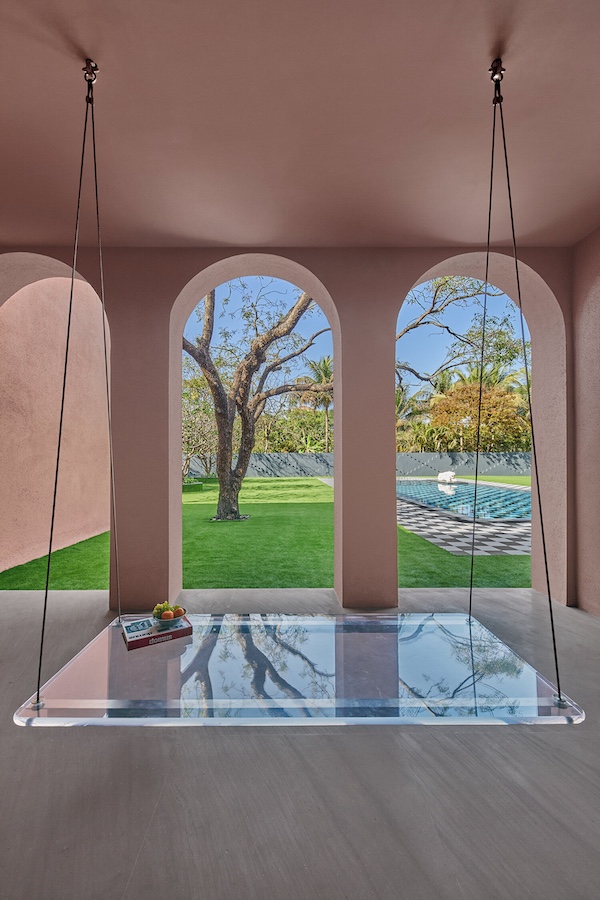
To retain visual coherence, Pinakin Patel uses glass for a swing that looks out onto the lawn. (Image Credits: Ashish Sahi)
Pinakin Privé — Keeping Sustainability In Vogue
The larger-than-life, rose-hued villa called Privé is an ephemeral addition to Alibaug’s rosary of hotels, homestays and Airbnb. Designed by Pinakin Patel in compliance with the ancient ideology of Vaastu, this sprawling five-bedroom residence is an immaculate colour story come alive. “I am a collector myself,” says Patel. “By the time I am ready with a space, I start trying out stuff that would embellish an otherwise thematic setting.”
The villa itself, like a behemothic flamingo, dips its beak into an enchanted palette of tropical oranges, pinks, matte black and brassy metallic accents. The furniture and lighting deployed throughout the villa have been tailor-made by the designer’s furniture label, Pinakin. Patterned rugs from Bhadohi Carpets swathe the stone floors, whereas velvet drapes from F&F bring a textural versatility.
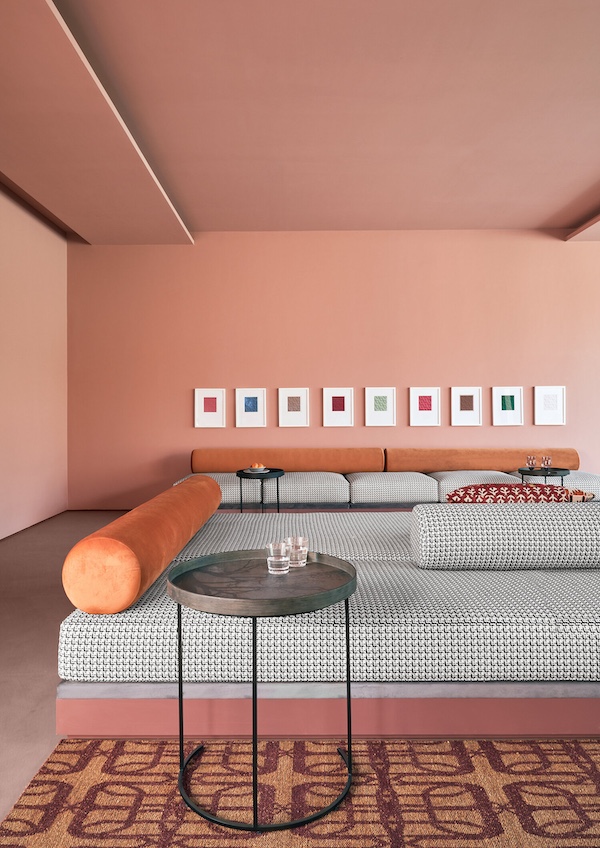
A symphony of clean curves echoes throughout Patel’s architectural composition. Aside from a few specimens of framed artwork by the designer himself, African indigenous masks in the living room and single-stemmed flowers in the den, Patel has pared down the accessories to an essentialist minimum.
With a vested interest in eco-conscious design, Patel tries to incorporate local materials as far as possible. The seamless pink flooring, for instance, is made up of Agra red stone while the lawns are clad with Astroturf in an attempt to mitigate the colossal amounts of water used for upkeep. In an age where social media algorithms are increasingly shaping trends, Pinakin Privé stands as a glimmering example that mindful and sustainable design need not be boring.
Also read: 3 Rental Villas In Goa That Embrace Heritage, Luxury And Sustainability
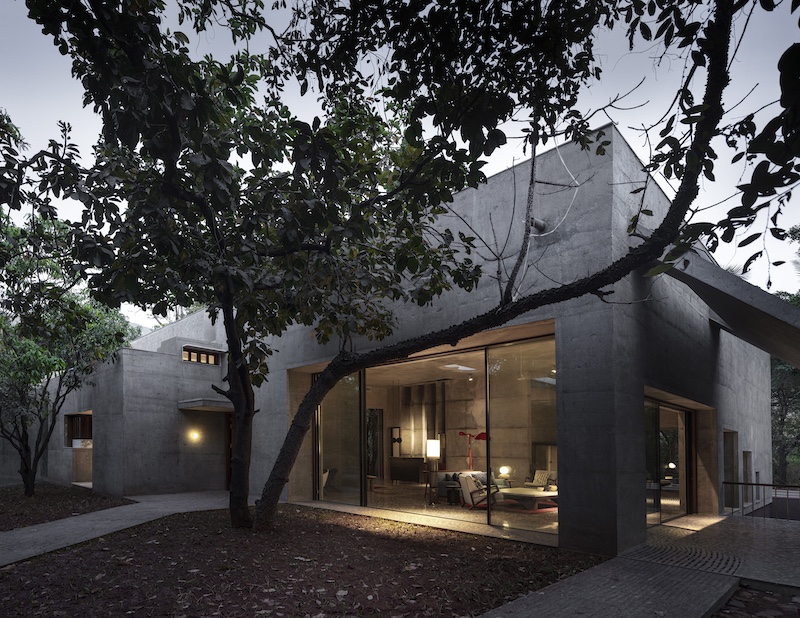
The House Of Concrete Experiments — Beauty In Recycled Materials
“Any client would be hesitant to experiment with new ideas and materials for their home, but not the owner of this house,” shares principal architect Samira Rathod. “He understands that the environment and its care is primary, and what it costs cannot be quantified in its direct outcome, but in what it does for years ahead.” Magicked into existence from the ground up on the foothills of Deotalai, the House Of Concrete Experiments designed by Samira Rathod Design Atelier (SRDA) is a brutalist masterpiece that remains in touch with its traditional roots.
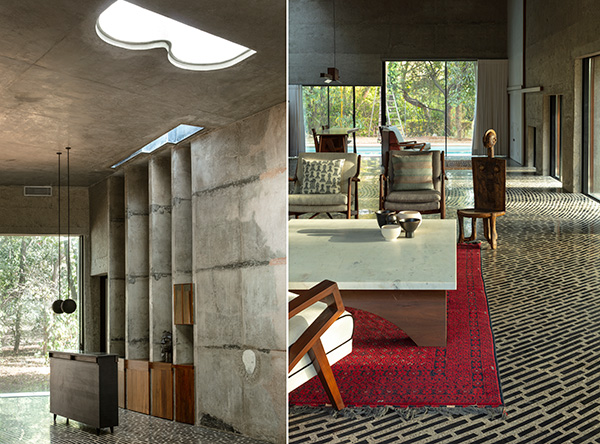
Black, white, pink stones and broken ceramic chips all conspire together in this artful specimen of flooring. (Image Credits: Niveditaa Gupta)
The custodianship of a lush mango orchard on site and the preservation of surrounding biodiversity was a significant concern for Rathod. Moreover, under the structural engineering of Sushil Singh from Studiostruct, small ducts were carved out within the thick concrete walls to harness the cool air and circulate it throughout the large volume of the 5000-sq-ft interiors. Much like an impasto of fossilised remains, the concrete walls of this house are moulded with debris from the site itself including broken brick, stone chips and large pieces of waste stone. The walls thus evolve into a thing of age-defying beauty, in part due to the manifold textures, but mainly because of the larger embedded stones that can remind us of the unceasing march of geological time.
For the floor, recycled blocks of black kadappa stone and broken ceramic tile chips were laid in situ and cast in terrazzo before polishing. Featuring large windows that usher in ample sunlight, the House Of Concrete Experiments looks out onto the foliage and grove of trees, in harmony with the natural landscape.
Also read: Organic Material And Local Craftsmanship Form The T House in Pune
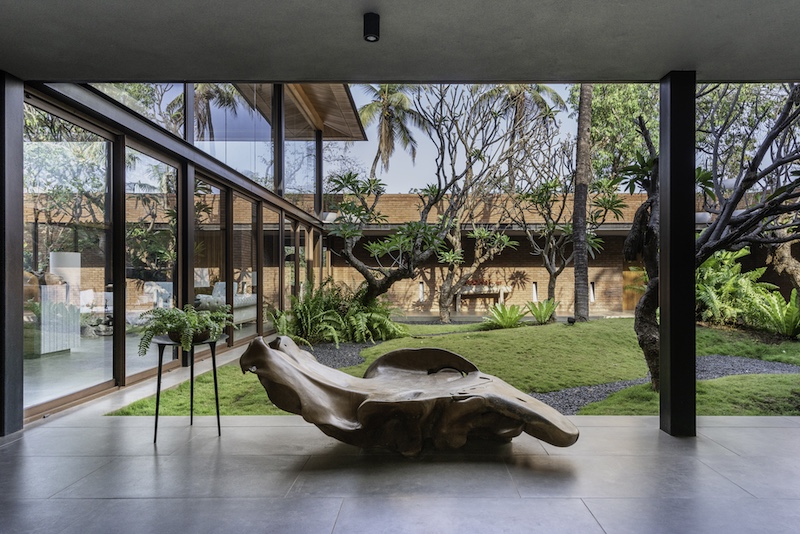
Casa Feliz — A Warm, Earthy Materiality
Helmed by ADND, ‘Casa Feliz’ is a 10,000-sq-ft home that dwells amidst existing trees and landscaped greenery on a two-acre site. Composed by its principal architect Shobhan Kothari, the existing trees and dense vegetation on site were left largely untouched for the sake of a squarish courtyard at the epicentre of the house — in a perennial homage to the practice of Tropical Modernism. “These spaces needed to be interactive and have an inside-outside connection,” Kothari explains. “We wanted to have the maximum amount of transparency to bring nature inside.” The eloquent interplay of textures inside Casa Feliz, and its grounded material palette of clay bricks and wood juxtaposed with metal elements bring in a touch of the contemporary.
Also read: ‘Tropical Brutalism’ Comes To Life In This Architect’s Studio in Kochi
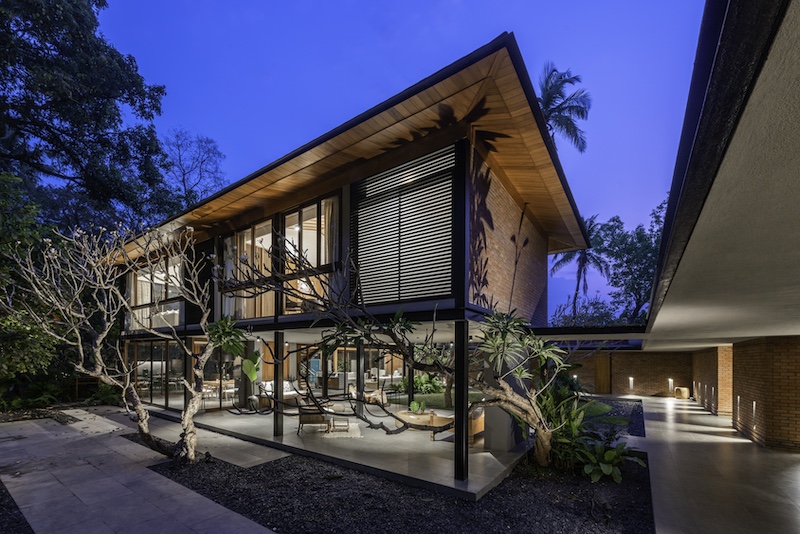
Palms, ferns, and manicured mounds of greenery dot the beautifully landscaped courtyard which punctuates two L-shaped building blocks. While the lower block is solid and fitted out with brick masonry work, the other, a glass pavilion, is permeable to the elements. Thus, Kothari masterminds a dichotomy between the public and private spaces in this home; with the glass pavilion holding social gatherings while the solid brick structure was imbued with a certain non-porosity to conceal the three bedrooms and kitchen. Heightening the haptics, this second home is all about the slow-living, subservient to a symbiosis of textures and tonality. Considering that Alibaug is a coastal town, ADND has wisely opted for a building approach that is not only culturally conscious but also in alignment with the tropical, semi-humid climate of the site.
Harnessing the power of in-situ materials, local artisans and reclaimed furniture, the evolving sensibility among holiday home designers in India is all about being on an even keel with the pre-existing flora and fauna. From the glitzy sophistication of Pinakin Privé’s essentialism to the climate-conscious sanctuary of Casa Feliz, each Alibaug villa featured here reflects a commitment to lowering greenhouse emissions. Going for a holiday has never felt more sustainable.
Tags
- Pinakin Patel
- Minimalist Elegance
- Tropical Modernism
- Luxury Villas
- Samira Rathod
- Recycled Materials
- Sustainable Luxury
- Mindful Living
- Green Architecture
- Indoor Outdoor Living
- Brutalist Architecture
- Cultural Synthesis
- Architectural Innovation
- Eco-Conscious
- Sustainable Living
- Urban Retreats
- Alibaug Homes
- Modern Design
- Eco-Friendly Design
- Shobhan Kothari
- Vaastu Design

